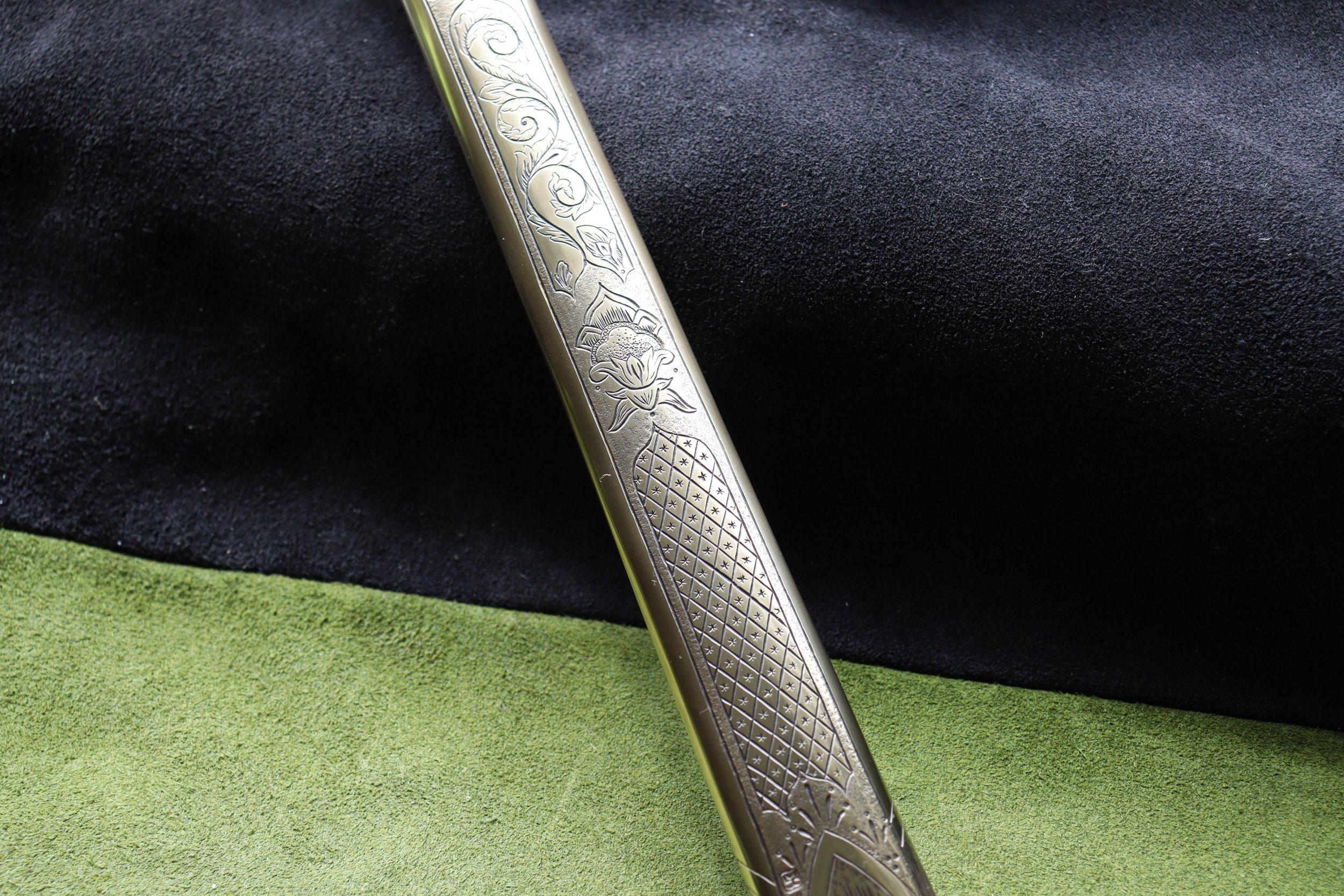Khmer Wedding Sword
Khmer Wedding Sword
At the time I was contacted about this piece, I hadn’t finished any major blade projects in nearly 4 years. There are a number of reasons for this, and although I maintained an interest in blades and had a few personal projects going in the meantime, it still caught me off guard when a friend of a friend reached out with a very unique commission request. It turned out to be a very happy surprise.
This small sword is my interpretation of a type that is typically associated with a traditional Cambodian wedding ceremony. Images of other existing pieces were somewhat difficult to find; the portion of the ceremony when the sword makes an appearance is just one of many parts and focusing on only one aspect would be a difficult challenge for any photographer. Luckily I did find a few online, and in addition I was supplied with photos of the sword belonging to the parents of the then bride-to-be.
From what I could tell, it was common for every inch of the sheath and handle to be embellished with either engravings or punchwork. There were a few themes I saw repeated on a number of pieces and, with the input and approval of the customer, I included them in a way that I hoped would honor the originals without being an outright copy. I was given the directive to make a piece that was instantly recognizable and belonged as a wedding sword while also creating something unique to the couple that could become an heirloom to pass on into the future.
All the handle parts were hand fabricated by me from sheets of brass, or thicker plates I had cast myself. Crafting the handle drew from many different skillsets I have acquired over the years and definitely tested my ability to combine them in a successful and cohesive way. The blade was forged from a bar of pattern welded steel I made years ago, it is a 72 layer twist pattern made from alternating pieces of 1084, 15n20, and 8670 steels. This was probably the largest deviation from the other pieces I’ve seen, most of the blades on other swords for this purpose are quite plain.
Before this, I had never made an all-metal sheath before. This was a fantastic opportunity to take a lot of theoretical ideas I had about the process and put them to the test. I don’t doubt that there may be more efficient ways to go about the process but I was still very pleased with the success of my approach. It was made freehand in two halves then silver soldered along the entire length of the seam which travels along the spine and “edge” of the sheath. Once I was sure there were no gaps in the seam, I cleaned up the surface, filled the interior with pitch and began the lengthy process of carving the detail into the surface with a series of small chisels.
As much of a challenge as the sheath was, the handle represented the majority of the work hours on this piece. I decided early on that the best way to go about it would be to make a series of stacked elements that would engage with the tang and provide structure and proper orientation to the handle. This involved lots of soldered seams, as two of the main handle pieces were handmade from flat sheets. The pommel was raised from a flat sheet into somewhat of an onion shape, then had a separate plate soldered onto the inside that allowed me to drill a hole through the center and add threads to screw onto the end of the tang.
The blade was made with fairly simple geometry: just two flat bevels that nearly meet without the need to sharpen into a true edge. This provided a nice, uninterrupted canvas for the very tight twist pattern in the blade. The profile of the blade was given a very subtle and slight S-curve, just enough to add a little visual interest.
All in all, I think it’s safe to say this is one of my finest works to date. It drew upon multiple skillsets that I have been working on developing for most of my metalworking career and combined them in ways that I had yet to achieve with past projects. Although I still don’t consider myself to be a dedicated Bladesmith, this was a very welcome return to that world. The success of the sheath has me thinking about even more ambitious projects in the future.












